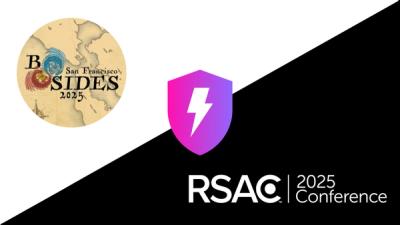
Security News
NVD Concedes Inability to Keep Pace with Surging CVE Disclosures in 2025
Security experts warn that recent classification changes obscure the true scope of the NVD backlog as CVE volume hits all-time highs.
cloudinary-react
Advanced tools
Supply Chain Security
Vulnerability
Quality
Maintenance
License
Cloudinary is a cloud service that offers a solution to a web application's entire image management pipeline.
Easily upload images to the cloud. Automatically perform smart image resizing, cropping and conversion without installing any complex software. Integrate Facebook or Twitter profile image extraction in a snap, in any dimension and style to match your website’s graphics requirements. Images are seamlessly delivered through a fast CDN, and much much more.
Cloudinary offers comprehensive APIs and administration capabilities and is easy to integrate with any web application, existing or new.
Cloudinary provides URL and HTTP based APIs that can be easily integrated with any Web development framework.
Install the files using the following command. Use the optional --save parameter if you wish to save the dependency in your bower.json file.
npm install cloudinary-react --save
Include the javascript files in your code. For Example:
import {Image} from 'cloudinary-react';
In order to properly use this library you have to provide it with a few configuration parameters. All configuration parameters can be applied directly to the element or using a CloudinaryContext element.
ReactDOM.render(
<div>
<h1>Hello, world!</h1>
<Image cloudName="demo" publicId="sample" width="300" crop="scale"/>
// Or for more advanced usage:
// import {CloudinaryContext, Transformation} from 'cloudinary-react';
<CloudinaryContext cloudName="demo">
<Image publicId="sample">
<Transformation width="200" crop="scale" angle="10"/>
</Image>
</CloudinaryContext>
</div>,
document.getElementById('example')
);
Required:
cloudName - The cloudinary cloud name associated with your Cloudinary account.Optional:
privateCdn, secureDistribution, cname, cdnSubdomain - Please refer to Cloudinary Documentation for information on these parameters.The library includes 4 Elements:
CloudinaryContext allows you to define shared parameters that are applied to all children elements.
The Image element defines a Cloudinary Image tag.
The Video element defines a Cloudinary Video tag.
The Transformation element allows you to defined additional transformations on the parent element.
For example:
<Image cloudName="demo" publicId="sample">
<Transformation angle="-45"/>
<Transformation effect="trim" angle="45" crop="scale" width="600">
<Transformation overlay="text:Arial_100:Hello" />
</Transformation>
</Image>
The Cloudinary Documentation can be found at: http://cloudinary.com/documentation
Additional resources are available at:
You can open an issue through GitHub.
Contact us at http://cloudinary.com/contact.
Stay tuned for updates, tips and tutorials: Blog, Twitter, Facebook.
Impact the product, hear updates, test drive new features and more! Join here.
Released under the MIT license.
FAQs
This is a legacy package, please find latest at https://www.npmjs.com/package/@cloudinary/react
The npm package cloudinary-react receives a total of 21,412 weekly downloads. As such, cloudinary-react popularity was classified as popular.
We found that cloudinary-react demonstrated a not healthy version release cadence and project activity because the last version was released a year ago. It has 1 open source maintainer collaborating on the project.
Did you know?

Socket for GitHub automatically highlights issues in each pull request and monitors the health of all your open source dependencies. Discover the contents of your packages and block harmful activity before you install or update your dependencies.

Security News
Security experts warn that recent classification changes obscure the true scope of the NVD backlog as CVE volume hits all-time highs.

Security Fundamentals
Attackers use obfuscation to hide malware in open source packages. Learn how to spot these techniques across npm, PyPI, Maven, and more.

Security News
Join Socket for exclusive networking events, rooftop gatherings, and one-on-one meetings during BSidesSF and RSA 2025 in San Francisco.